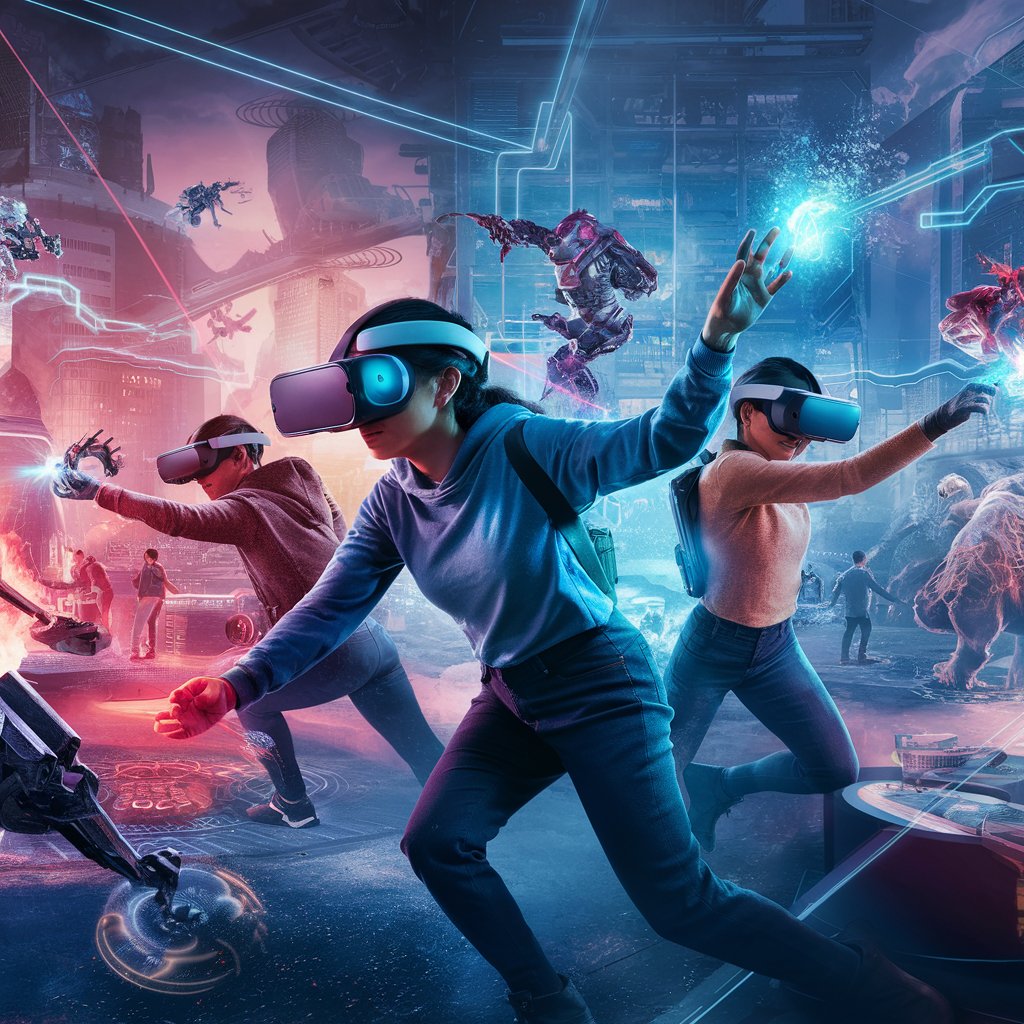Virtual reality (VR) is fundamentally transforming the gaming landscape by creating deeply immersive experiences that were once unimaginable. In the past, gaming was largely confined to the limitations of screens and traditional controllers, but VR breaks these barriers, allowing players to step directly into the game world. This immersive quality is a significant factor in VR’s growing popularity. Players can now physically move, look around, and interact with the virtual environment in ways that are natural and intuitive, making the experience more engaging and emotionally impactful.
One of the most compelling aspects of VR gaming is the level of immersion it offers. Traditional games, even those with stunning graphics, still rely on a flat screen to deliver their content. In contrast, VR surrounds the player with a 360-degree view of the game world, making them feel as if they are truly inside the game. This level of immersion can evoke stronger emotional responses, from the thrill of exploring new worlds to the adrenaline rush of surviving a horror game. The ability to fully engage with the environment in VR is what sets it apart, making each gaming session a unique experience that goes beyond mere entertainment.
The interactivity in VR gaming is another game-changer. In a VR environment, players can use motion controllers or even their own hands to interact with objects, solve puzzles, and engage in combat. This tactile feedback enhances the realism of the game and gives players a greater sense of control and agency within the game world. For example, in a VR shooting game, the player doesn’t just press a button to fire a weapon—they physically aim and pull the trigger, which can make the experience far more intense and satisfying. This kind of interactivity is something that traditional gaming platforms struggle to replicate, making VR a preferred choice for those seeking a more active and participatory gaming experience.
VR is also opening up new possibilities for social interaction in gaming. Multiplayer VR games allow players to meet, collaborate, and compete with others in virtual spaces, creating a sense of presence that goes beyond what is possible with standard online multiplayer games. In VR, players can see each other’s avatars, make eye contact, and even use body language to communicate, which adds a new layer of realism and social connectivity. This can lead to more meaningful interactions and a stronger sense of community among players. Additionally, VR platforms often include social hubs where players can gather, chat, and engage in activities together, further enhancing the social aspect of gaming.
The advancements in VR technology are also driving innovation in game design. Developers are exploring new ways to take advantage of VR’s unique capabilities, creating games that are specifically designed for the medium rather than just porting existing games into VR. This has led to the emergence of entirely new genres and gameplay experiences that were previously impossible. For instance, VR escape rooms, where players must solve puzzles in a fully immersive environment, are becoming increasingly popular. Similarly, fitness games that use VR to turn exercise into an engaging and enjoyable activity are attracting a growing number of users.
In conclusion, virtual reality is not just a trend in the gaming industry; it is a revolutionary force that is reshaping how games are played, experienced, and enjoyed. The level of immersion, interactivity, and social connectivity offered by VR is unparalleled, making it a powerful tool for creating more engaging and memorable gaming experiences. As VR technology continues to evolve, we can expect even more innovative games and experiences that push the boundaries of what is possible in the virtual world. For gamers and developers alike, VR represents an exciting frontier with limitless potential.

